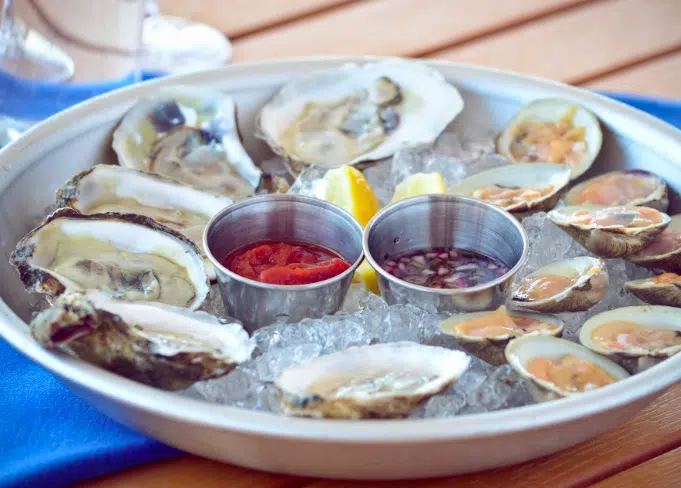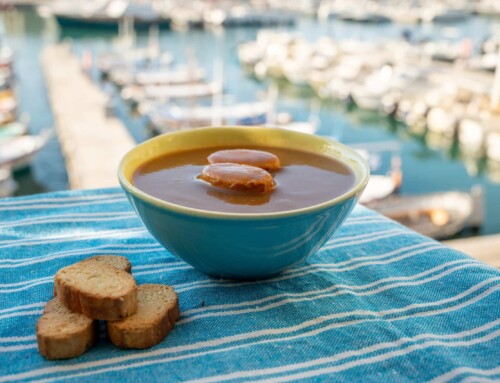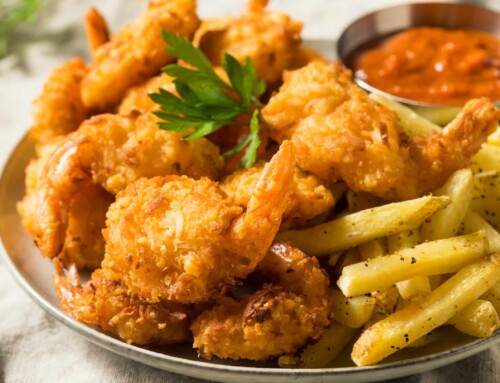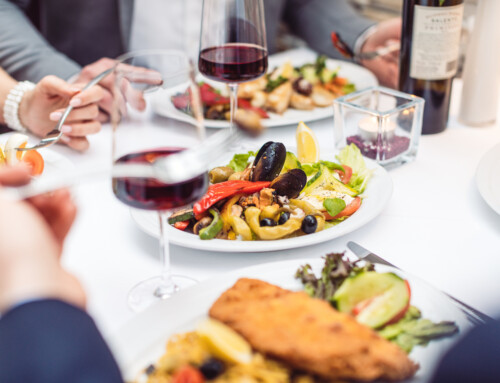Terms You Should Know
Liquor: The oyster juice to savor. This juice is trapped inside an oyster shell along with the plump and delicious meat. It’s one of the best parts!
Creaminess: Used to describe a buttery, sweet, and soft oyster. (Often used when describing a spawning oyster.
Copper: When an oyster is metallic and green-tasting.
Mignonette: A vinegary shallot- based sauce you can drizzle over your oyster.
Naked: How an oyster should be eaten. Raw and ready to be fully enjoyed with all its flavors.
Brine: Saltiness of an oyster. East coast oysters tend to have a stronger brininess to them.
Crispness: Cold water slows down an oyster’s metabolism which causes the oysters meat to become more crisp. When waters warm an oysters meat tends to become more soft and briny.
OYSTERS ARE EXTREMELY NUTRITIOUS
Are oysters good for you? Absolutely! Raw oysters are packed full of lesser-known health benefits. They’re low in calories and fats and they are high in protein, beneficial antioxidants, and omega-3 fatty acids. Oysters are also incredibly high in zinc, and are often considered to be the world’s most zinc-rich food. Six medium-sized oysters provide 291% of the recommended daily value of zinc.
Zinc is hugely important for the body’s immune system and our bodies don’t naturally create it so we must rely on external sources. Zinc is used by every cell in the body and is crucial for developing cells, healing wounds, aiding in the production of testosterone, and much more.
NOT ALL OYSTERS CONTAIN PEARLS
Edible oysters are not the species that grows pearls. There are many different types of oysters, and the pearl-bearing oysters are more closely related to clams or mussels, though it doesn’t hurt to double check your oysters after you shuck them, just in case!
THERE ARE WORTHWHILE WAYS TO CHECK OYSTER QUALITY
Fresh oysters are worlds away from those that are less fresh, and it pays to seek out the freshest, highest quality oysters you can find. Here are a few tips for sourcing the freshest oysters:
- Ask your server or supplier when the oysters were harvested— Every oyster you buy from a restaurant or market was given a tag when it was harvested. If you know how to read an oyster tag you can find out who packed and shipped it, the date it was harvested, and even the harvest location.
- Avoid oysters that stick to their shells— Fresh oysters should be well-hydrated from the seawater, and sticking to the shell is a sign that it has been out of water for longer.
- Never keep your oysters in freshwater— Oysters that are born in the sea are best kept out of fresh or tap water. Not only will tap water kill them, it will also take away their beautiful, fresh, oceanic taste.






